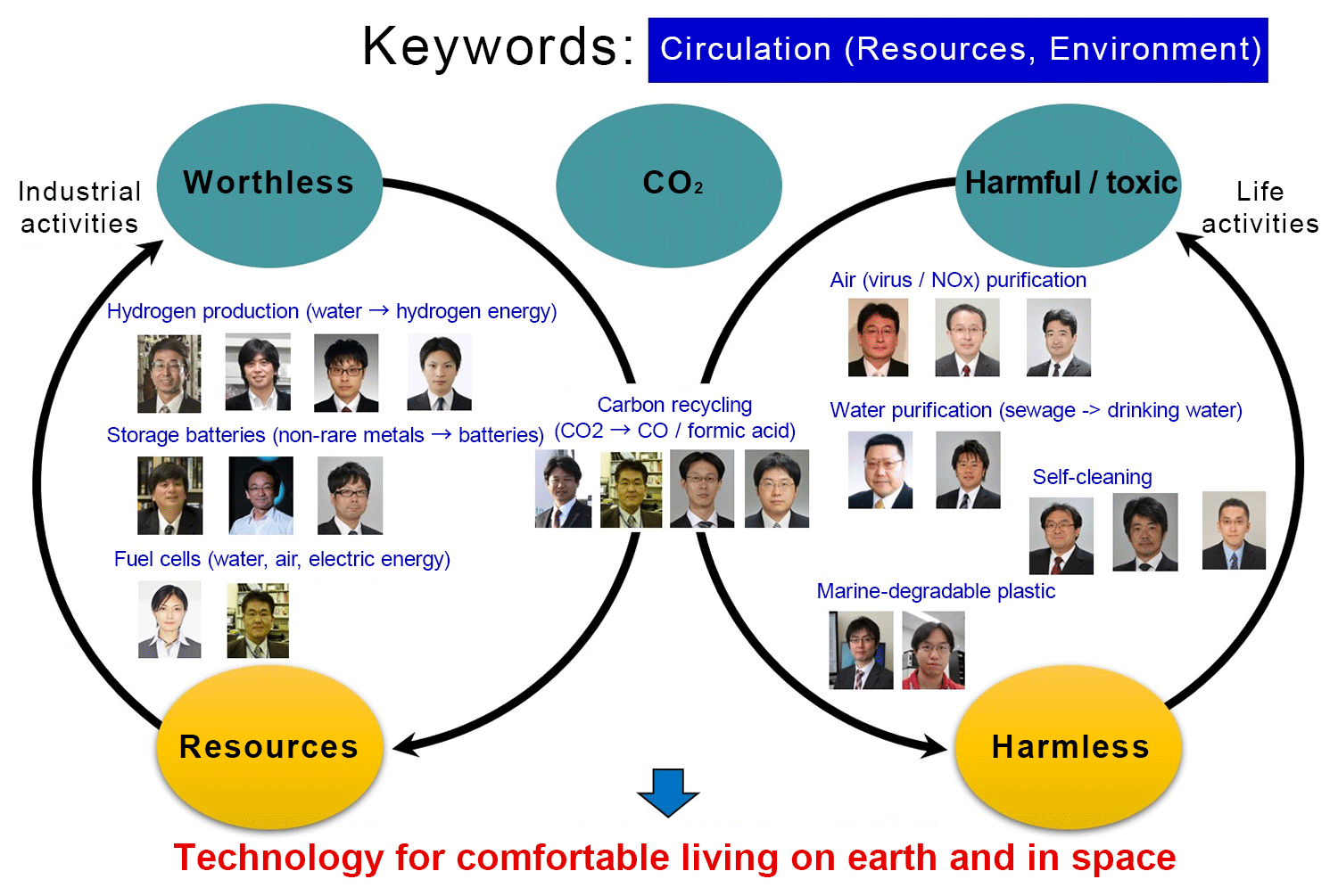Photocatalyst International unit
This unit aims to achieve integration with terrestrial applications, focusing on the virtuous cycle between earth and space. Even though space development requires extremely advanced technology, the opportunities to utilize it are orders of magnitude smaller than those of terrestrial applications, which is why it is difficult for industry to enter the field and why it is very costly. Therefore, we promote cooperation with many companies and research institutes that have no contact with space development by “forming a virtuous cycle between earth and space” regarding technologies necessary for space habitation such as water, air, food, and energy, with a focus on photocatalysis.

Message
Chiaki TERASHIMA
Photocatalysis International Unit Leader
Faculty of Science and Technology, Department of Pure and Applied Chemistry Professor

Photocatalysis is a field of science and technology that originated in Japan with the discovery of the Honda-Fujishima effect, which is attracting worldwide attention as a technology for solving energy and environmental problems. This unit conducts research and development to help create: (1) an energy-saving, environment-friendly society, (2) a safe, secure, and healthy society, and (3) a comfortable space, with a view to both implementation on earth and utilization in space, with “circulation” as a keyword.
To date, at the International Research Center for Photocatalysis and the Photocatalysis Research Promotion Center, the predecessors of the Unit, we have conducted demonstration research on photocatalysis in collaboration with industry, government, and academia, and have used the results to establish photocatalysis as a comprehensive system. In addition, as the center of photocatalytic research in Japan, we have made many academic achievements through joint research and returned them to society through commercialization. By expanding this mechanism to space, we will expand its utilization from here on.
In the future, by teaming up with space as an asset, interdisciplinary integration will be dramatically promoted, and our unparalleled research center is expected to make great contributions. In addition to the carbon recycling project and the moonshot project, we will participate in new large-scale projects, and deepen environmental and resource recycling technology based on photocatalysis and link it to social use by networking with domestic and overseas centers and obtaining subsidies through the Joint Usage and Research Center Project of the Ministry of Education, Culture, Sports, Science and Technology.
NEWS
- [Press Release] New Materials Discovered for Safe, High-Performance Solid-State Lithium-Ion Batteries 2024.04.12
- Results
- Terashima Lab student received Graduate Student Award of MRM2023/IUMRS-ICA2023 MRM Poster Award on Materials Research Society of Japan (MRS-J) ” Scanning in-liquid microwave plasma CVD assisted synthesis of BDD films for CO2 reduction application” 2024.03.05
- Results
- Professor Yuichi Negishi and Junior Associate Professor Tokuhisa Kawawaki et al.’s paper was selected for Supplementary Cover in The Journal of Physical Chemistry Letters 2024.02.16
- Results
- Hasegawa Lab student received Best Student Paper Award on the 10th Anniversary Korea-Japan Joint Workshop on Complex Communication Science 2024.02.15
- Results
- Professor Yuichi Negishi and Assistant Professor Saikat Das et al.’s paper was selected for Supplementary Cover in ACS Materials Letters 2024.02.14
- Results
- Professor Yuichi Negishi et al.’s paper was selected for Supplementary Cover in The Journal of Physical Chemistry Letters 2024.02.13
- Results


